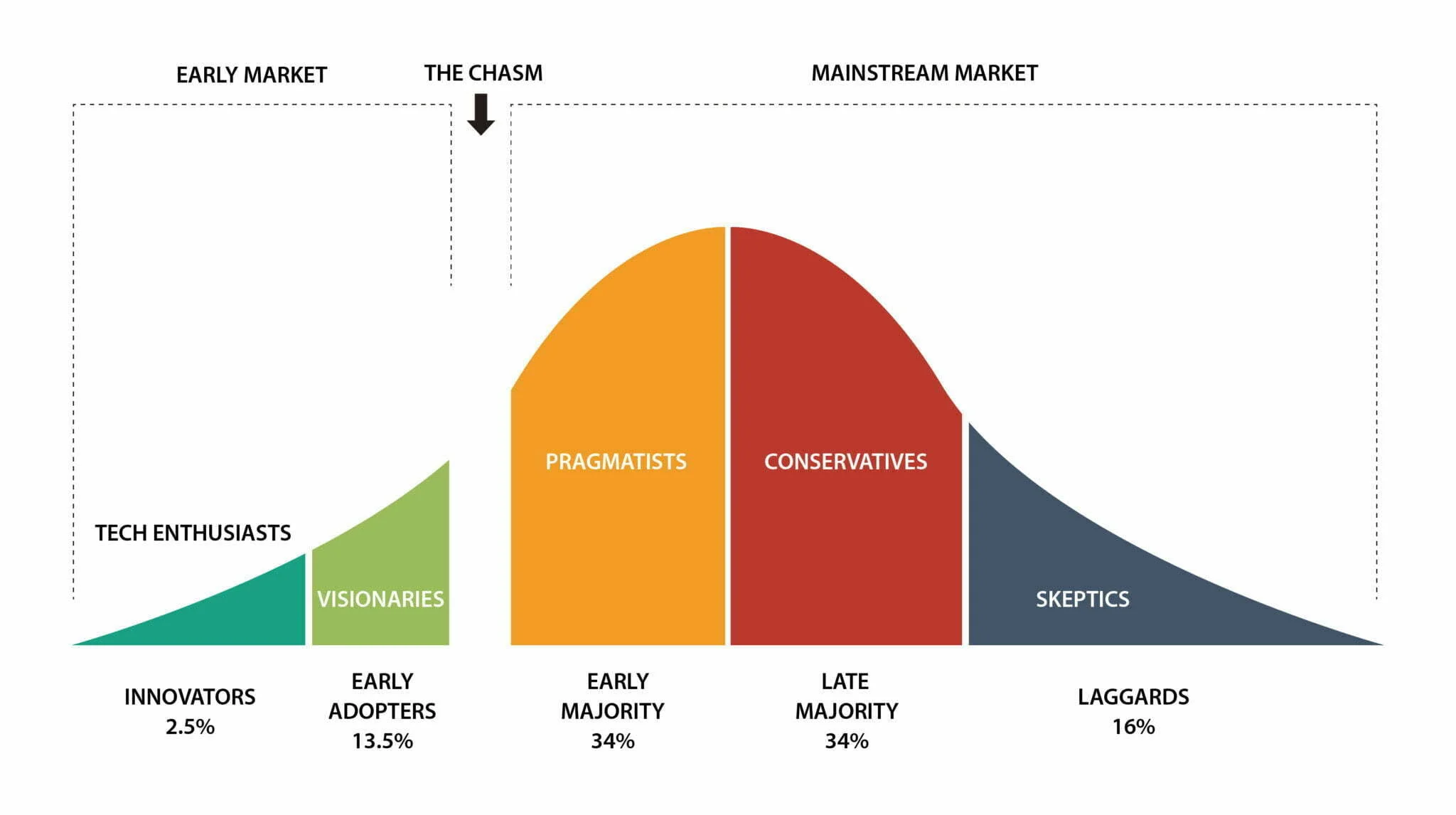Prioritizing your tech product roadmap to align with the technology adoption curve
After you answer the four key questions to validate the inputs to your product roadmap, you must then prioritize these four questions (and, of course, the answers).
Technology adoption curve and its impact on your product roadmap’s priorities
How you determine the most important question depends on your company’s priorities at any given time. As your company grows, it will go through a number of phases, as demonstrated in the technology adoption curve.


Source: https://omniplexlearning.com/blog/technology-adoption-curve-stages/
Your company’s position on the technology adoption curve will determine its goals and the highest priorities for your product roadmap.
Innovators/Early adopters: These groups like new functionality, but they need the product to solve their problems.
If you have not yet delivered a product to customers, and this is the first version, then you might have to execute technical building blocks first, and then deliver on your core strategy, which solves the customer’s problem.
Early majority: This group will account for most of your revenue, but will require reference customers (that is, early adopters who will promote your product in the market) to be confident in their purchase.
If you have a product but you are looking for reference customers, then concentrate on delivering functionality to make customers happy.
If you need to capture market share and bring in revenue, then focus on features that will help you to close deals with prospective customers.
Guidelines for combining your priorities
Every product manager has different methods of prioritizing, ranking and categorizing inputs. Follow these guidelines to decide what is important to your company for now.
Committed dates: There may be things that your company must accomplish by a particular date. These must be given top priority (for more information, read the article, Using your product roadmap effectively).
Company priorities: Where your company lies on the technology adoption curve will drive different priorities. Companies in the “early adopter” phase tend to focus on gaining reference customers and executing the product strategy. Companies in the“early majority” phase are primarily concerned with revenue.
Other priorities: Pay less attention to, but do not ignore, other company priorities. These can include customer-support issues, scalability or competitive features.
Note: Product roadmaps constantly evolve, and it would be difficult to address every item on your product roadmap at the same time. Pay attention to the most important items in each area of priority, and adjust regularly to account for new internal and external developments.
Balancing priorities
Maintain a balance across priorities, and do not ignore any one priority. Heed the consequences of putting too much focus on one main concern:
Revenue-focused: By focusing on revenue, you run the risk of veering off strategy, and producing a solution that focuses on particular customers. These products will not serve the entire market.
Reference-focused: By focusing on satisfying existing customers and turning them into reference customers, you will be less effective at delivering your strategy across your entire target market.
Strategy-focused: Without considering market inputs, your strategy might miss the target, and you will lack the information to adjust your strategy accordingly.
Competition-focused: Although it’s important to be competitive, ensure that you’re not adding functionality just to match your competitors’ offerings. A product roadmap with a focus only on the competition will be out of touch with its specific market.
Note: For more details on product roadmaps, refer to the other four articles in this series:
- Introduction to product roadmaps
- Inputs to product roadmaps
- Using your product roadmap effectively
- Validating inputs to product roadmaps
References
Grant, T. Your Roadmap Should Make Someone Unhappy. Retrieved June 23, 2010, from http://blogs.forrester.com/tom_grant/10-06-14-your_roadmap_should_make_someone_unhappy
Moore, G. A. (2002). Crossing the Chasm: Marketing and Selling High-Tech Products to Mainstream Customers. New York: HarperCollins Publishers Inc.

